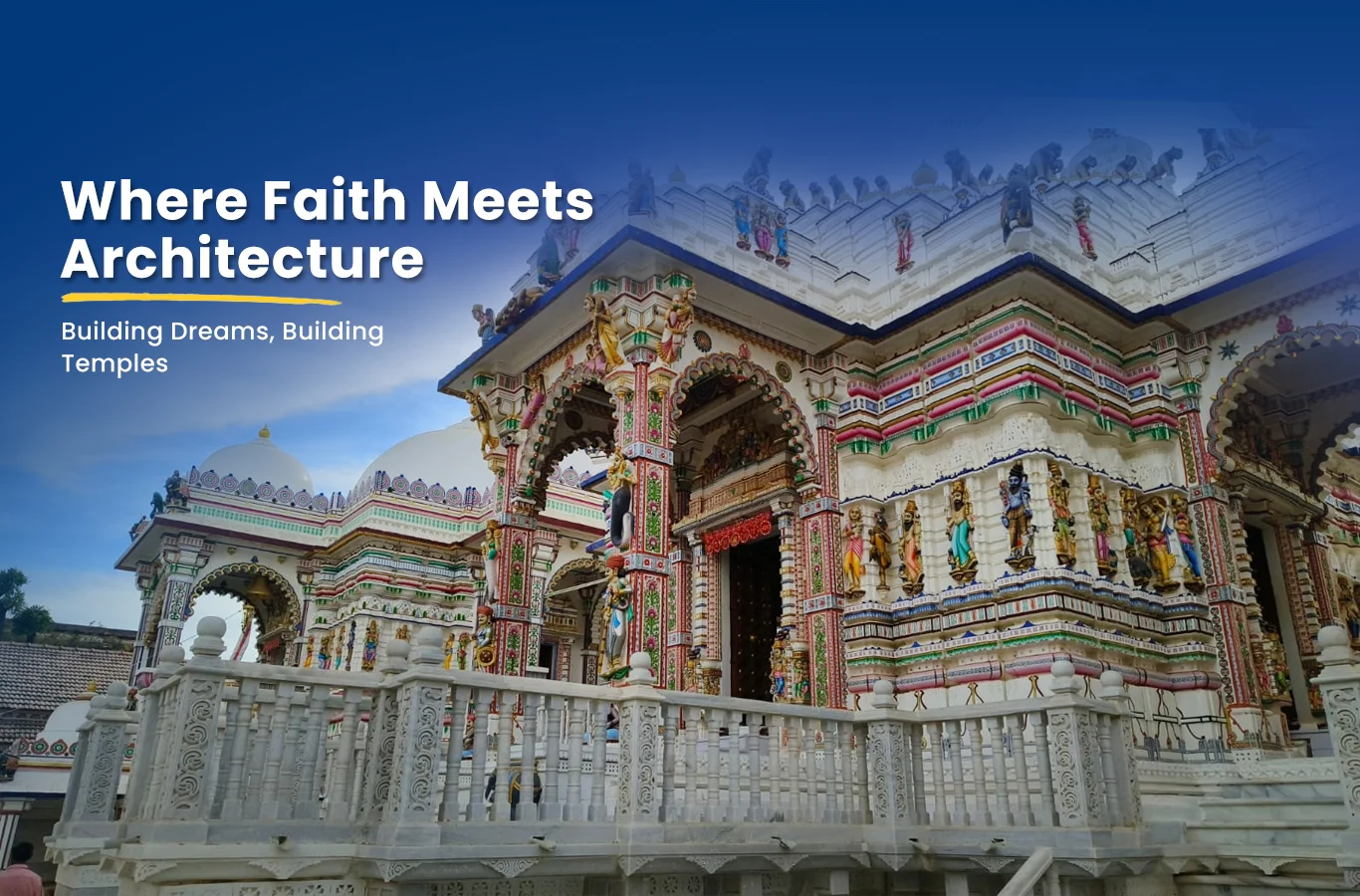Temple architecture in India is a living testament to the country’s rich cultural and spiritual heritage. From ancient stone temples to modern-day marvels, the role of Temple Architects in India has been pivotal in ensuring the preservation of traditions while adapting to contemporary needs. This article explores how temple architects preserve heritage through design, with a focus on the contributions of the Jain Temple Sompura community and the expertise of Temple Construction Services in Gujarat.
The Role of Temple Architects in India
Temple architects are the custodians of ancient wisdom, blending artistry, spirituality, and engineering in their designs. Their role extends beyond mere construction—they ensure that temples remain cultural icons that reflect the ethos of their times.
Responsibilities of Temple Architects
- Preservation of Tradition: Following guidelines from texts like Vastu Shastra and Shilpa Shastra.
- Integration of Symbolism: Designing elements that embody cosmic and spiritual principles.
- Adapting to Modern Needs: Incorporating functionality without compromising traditional aesthetics.
Whether working on ancient temples or modern constructions, Temple Architects in India continue to uphold these principles.
Jain Temple Sompura: Masters of Heritage Preservation
The Jain Temple Sompura community is synonymous with temple architecture. For generations, Sompura architects have designed some of the most iconic Jain temples, combining intricate craftsmanship with spiritual significance.
Contributions of Jain Temple Sompura Architects
- Masterful Carvings: Intricate marble and stone carvings that narrate spiritual tales and cosmic designs.
- Mathematical Precision: Adherence to geometric and proportional principles for architectural harmony.
- Sustainable Techniques: Use of durable materials like marble and sandstone ensures the longevity of their creations.
Famous examples include the Dilwara Temples in Rajasthan and the Ranakpur Temple in Gujarat, which are masterpieces of heritage preservation.
The Role of Temple Construction Services in Gujarat
Gujarat has emerged as a leader in temple construction, with services that combine traditional craftsmanship and modern technology. Temple Construction Services in Gujarat play a crucial role in preserving the heritage of temple design while meeting contemporary requirements.
How Gujarat Excels in Temple Construction
- Collaboration with Architects: Working closely with Temple Architect in India and the Jain Temple Sompura community ensures authenticity.
- Advanced Techniques: Incorporating modern tools like 3D modeling and precision carving equipment.
- Sustainability: Using eco-friendly practices such as rainwater harvesting and renewable energy solutions.
Examples of their work include the Palitana Temples and restoration projects like the Somnath Temple, showcasing a blend of tradition and innovation.
Preserving Heritage Through Design
Symbolism in Temple Architecture
Every element of a temple’s design has symbolic meaning, from the towering shikhara to the intricately carved mandapa. Temple architects ensure that these symbolic elements remain central to their designs, preserving their spiritual essence.
Restoration and Conservation
Restoration projects require a deep understanding of traditional techniques. Temple architects in Gujarat and across India work to restore ancient temples, using the same materials and methods as the original builders.
Incorporating Modern Needs
Modern temples often include features like community halls, meditation centers, and eco-friendly facilities. Architects balance these additions with traditional designs, ensuring that heritage is preserved.
Challenges Faced by Temple Architects
Balancing Tradition and Innovation
- Preserving Authenticity: Ensuring that modern materials and methods do not compromise traditional aesthetics.
- Rising Costs: High-quality materials like marble and skilled artisans are expensive.
- Environmental Impact: Using sustainable materials while maintaining the grandeur of traditional designs.
Solutions to Overcome Challenges
- Collaborating with experienced communities like the Jain Temple Sompura.
- Using modern tools for precision and efficiency.
- Focusing on eco-friendly materials and construction practices.
Case Study: Role of Temple Architects in Gujarat
The Palitana Temples
- These temples on Shatrunjaya Hill are masterpieces of Jain architecture.
- Designed by Jain Temple Sompura architects, they feature intricate carvings and spiritual symbolism, preserved for centuries.
Somnath Temple Restoration
- The temple was restored using traditional designs while integrating modern construction methods.
- Temple Construction Services in Gujarat played a key role in maintaining the temple’s heritage.
Ranakpur Temple
- This marble temple in Gujarat is a fine example of blending artistry with mathematical precision.
- It showcases the expertise of both Sompura architects and modern construction teams.
Future of Temple Architecture in India
The future of temple architecture lies in the hands of skilled architects and builders who honor tradition while embracing innovation.
- Preservation of Ancient Techniques: Ensuring that traditional methods are not lost in the face of modernization.
- Adopting New Technologies: Using advanced tools for precision without compromising on heritage.
- Fostering Collaboration: Encouraging partnerships between communities like the Jain Temple Sompura and modern architects.
Conclusion
The role of Temple Architect in India is vital in preserving the rich legacy of temple design. By combining ancient wisdom with modern practices, they ensure that temples remain timeless symbols of spirituality and culture. The contributions of the Jain Temple Sompura community and the innovation of Temple Construction Service in Gujarat demonstrate how heritage can be preserved and enhanced for future generations.
In a rapidly changing world, temple architects continue to uphold India’s architectural and spiritual traditions, creating spaces that inspire devotion and awe.

